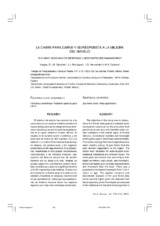La cabra para carne y respuesta al cambio de manejo
The meat goat and the flocks performance under improved management
Autor
Casiano, M.A.
Vargas López, Samuel
Rodríguez Alcaide, J.J.
Sánchez-Rodríguez, M.
Hernández Zepeda, J.S.
Editor
Universidad de Córdoba, Servicio de PublicacionesFecha
2005Materia
Rebaños caprinos para carneVariables zoométricas
METS:
Mostrar el registro METSPREMIS:
Mostrar el registro PREMISMetadatos
Mostrar el registro completo del ítemResumen
The objective of this study was to characterize the Creole meat goat and evaluate some management practices on the productive flock performance and economic benefits under on-farm conditions in the central region of Puebla (Mexico). Zoometrical variables and liveweight of 469 goats, aged 1.5 to 5 years were recorded. Production, management and budget data were taken monthly visiting 70 goat flocks from the rural farmers organization in the region. The flocks were classified for technological level: traditional, transitional and minimum inputs. The meat goats are medium size according to their height at withers, body length, and liveweight. Bucks had higher (p£0.05) body measurements and liveweight than the does. There was a progressive increase in liveweight from 1.5 to 5 years of age. The applied variance and discriminate analysis on the goat flocks data found out that higher profit are obtained from herds depending on minimum inputs, as compared to the traditional and transitional management; it can be explained by the specializing in rearing meat goat of the minimum inputs flocks. El objetivo del estudio fue caracterizar a la cabra para carne y evaluar el efecto que tiene la mejora de las prácticas de manejo en los parámetros productivos y económicos de las explotaciones en la región central de Puebla, México. El estudio de la caracterización zoométrica y del peso vivo se realizó en 469 caprinos, con una edad de 1,5 a 5 años. Para estudiar las prácticas de manejo, las producciones y los registros económicos se dio seguimiento a 70 explotaciones, clasificadas en tres grupos: tradicionales, transicionales y de mínimos insumos. Los caprinos del área de estudio son de tamaño mediano por su altura a la cruz, longitud de cuerpo y peso vivo. Los machos tuvieron variables zoométricas y peso vivo significativamente (p£0,05) mayores que las hembras. El peso vivo se incrementó conforme avanzó la edad de los animales. El análisis de varianza y discriminante de las explotaciones, indica que las explotaciones de mínimos insumos tienen los mayores ingresos, por estar más orientadas al mercado.

